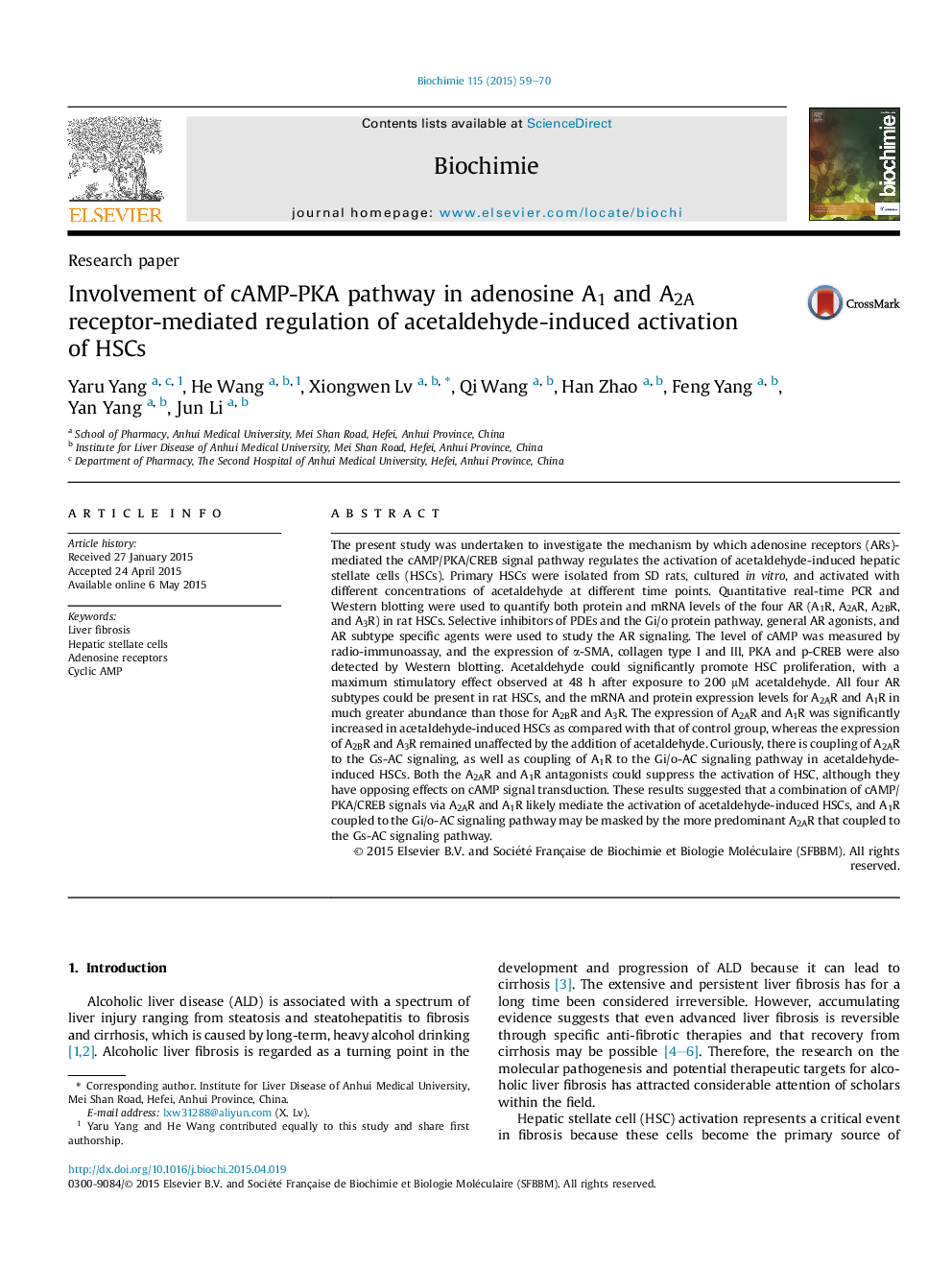| کد مقاله | کد نشریه | سال انتشار | مقاله انگلیسی | نسخه تمام متن |
|---|---|---|---|---|
| 1952036 | 1538416 | 2015 | 12 صفحه PDF | دانلود رایگان |

• In vitro cell culture model for alcohol induced liver fibrosis.
• Quantification of the expression of A1R, A2AR, A2BR and A3R in acetaldehyde-induced HSCs.
• An AR couples to the Gs-AC-cAMP and the Gi/o-AC-cAMP signaling pathway.
• Involvement of cAMP-dependent pathway in the inhibitory effect of A2AR antagonist on acetaldehyde-induced HSC activation.
• Involvement of cAMP-independent pathway in the inhibitory effect of A1R antagonist on acetaldehyde-induced HSC activation.
The present study was undertaken to investigate the mechanism by which adenosine receptors (ARs)-mediated the cAMP/PKA/CREB signal pathway regulates the activation of acetaldehyde-induced hepatic stellate cells (HSCs). Primary HSCs were isolated from SD rats, cultured in vitro, and activated with different concentrations of acetaldehyde at different time points. Quantitative real-time PCR and Western blotting were used to quantify both protein and mRNA levels of the four AR (A1R, A2AR, A2BR, and A3R) in rat HSCs. Selective inhibitors of PDEs and the Gi/o protein pathway, general AR agonists, and AR subtype specific agents were used to study the AR signaling. The level of cAMP was measured by radio-immunoassay, and the expression of α-SMA, collagen type I and III, PKA and p-CREB were also detected by Western blotting. Acetaldehyde could significantly promote HSC proliferation, with a maximum stimulatory effect observed at 48 h after exposure to 200 μM acetaldehyde. All four AR subtypes could be present in rat HSCs, and the mRNA and protein expression levels for A2AR and A1R in much greater abundance than those for A2BR and A3R. The expression of A2AR and A1R was significantly increased in acetaldehyde-induced HSCs as compared with that of control group, whereas the expression of A2BR and A3R remained unaffected by the addition of acetaldehyde. Curiously, there is coupling of A2AR to the Gs-AC signaling, as well as coupling of A1R to the Gi/o-AC signaling pathway in acetaldehyde-induced HSCs. Both the A2AR and A1R antagonists could suppress the activation of HSC, although they have opposing effects on cAMP signal transduction. These results suggested that a combination of cAMP/PKA/CREB signals via A2AR and A1R likely mediate the activation of acetaldehyde-induced HSCs, and A1R coupled to the Gi/o-AC signaling pathway may be masked by the more predominant A2AR that coupled to the Gs-AC signaling pathway.
Journal: Biochimie - Volume 115, August 2015, Pages 59–70